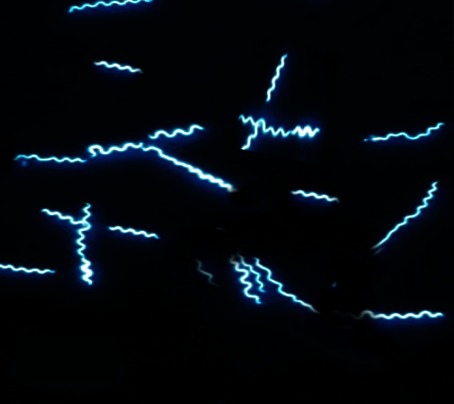Lyme disease Pathenogenisis
Introduction
By Jp Timken

Lyme disease is a vector-borne illness caused by a spirochete known as Borrelia burgdorferi. It has serious side effects and can lead to issues with the heart, brain, and spinal cord. Transmission occurs through certain species of ticks, and takes several days. Removal of the tick before 36 hours can reduce chances of infection. As such, it is typically transmitted through younger, smaller ticks that can go undetected for longer periods of time.[1]
The name comes from the point of discovery, which was Lyme, Connecticut in the 1970s. In spite of this, the disease is thought to have been around since the early 20th century.
B. burgdorferi consists of a long body that may appear wavy or curled. The genome consists of a linear chromosome and many plasmids. The expression of these genes changes based on the host species. So, the genes expressed while in a tick will vary from those expressed after transmission to a different host organism.
Lyme disease can be treated through various antibiotics. Symptoms will typically subside once treatment is administered, though they can persist in some cases. For more serious cases, intravenous antibiotics may be necessary, but if it is caught early, oral antibiotics may be prescribed by a doctor to prevent serious infection. A lot about treatment is still unknown.
Other examples:
Bold
Italic
Subscript: H2O
Superscript: Fe3+
Sample citations: [2]
[3]
A citation code consists of a hyperlinked reference within "ref" begin and end codes.
To repeat the citation for other statements, the reference needs to have a names: "Cite error: Closing </ref> missing for <ref> tag When feeding, the tick passes its own saliva to the host, which is when B. burgdorferi is transmitted. When the tick first begins to feed on the host, the spirochete begins to rapidly reproduce in the gut of the tick, preparing for transmission. The tick has the ability to change the chemical composition of the saliva to damage the host immune system and response. The saliva is very important for B. burgdorferi to be transmitted from the tick to the host.[4]
The symptoms of Lyme disease can vary. Often, a rash occurs shortly after transmission. The rash is circular, centering around the bite and expanding out over the course of several days. In rare cases, it may cause pain or itchiness, but it typically won’t cause any type of discomfort. In the case that a rash doesn’t appear, other beginning symptoms might take its place, such as aches, fatigue, fever, headache, or chills. These symptoms and the rash typically won’t occur together. After the initial infection period, which lasts anywhere from 3-30 days, additional symptoms may occur. The main symptom is joint and muscle pain or stiffness. Swelling of the joints can also occur, and more rashes can appear on other parts of the body. This disease can be very dangerous and cause complications with the heart, spinal cord, and even brain.[5]
Immune Response
Treatment
Conclusion
References
- ↑ [Transmission. 2020. Centers for Disease Control and Prevention. https://www.cdc.gov/lyme/transmission/index.html]
- ↑ Hodgkin, J. and Partridge, F.A. "Caenorhabditis elegans meets microsporidia: the nematode killers from Paris." 2008. PLoS Biology 6:2634-2637.
- ↑ Bartlett et al.: Oncolytic viruses as therapeutic cancer vaccines. Molecular Cancer 2013 12:103.
- ↑ [ Bockenstedt, L.K., Wooten, R.M., and Baumgarth, N. “Immune Response to Borrelia: Lessons from Lyme Disease Spirochetes”. 2021.Immune Response to Borrelia: Lessons from Lyme Disease ...https://www.mdpi.com › pdf]
- ↑ [ “Signs and Symptoms of Untreated Lyme Disease”. 2021. Centers for Disease Control and Prevention. https://www.cdc.gov/lyme/signs_symptoms/]
Authored for BIOL 238 Microbiology, taught by Joan Slonczewski, 2022, Kenyon College
